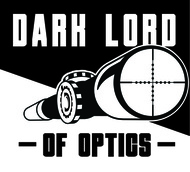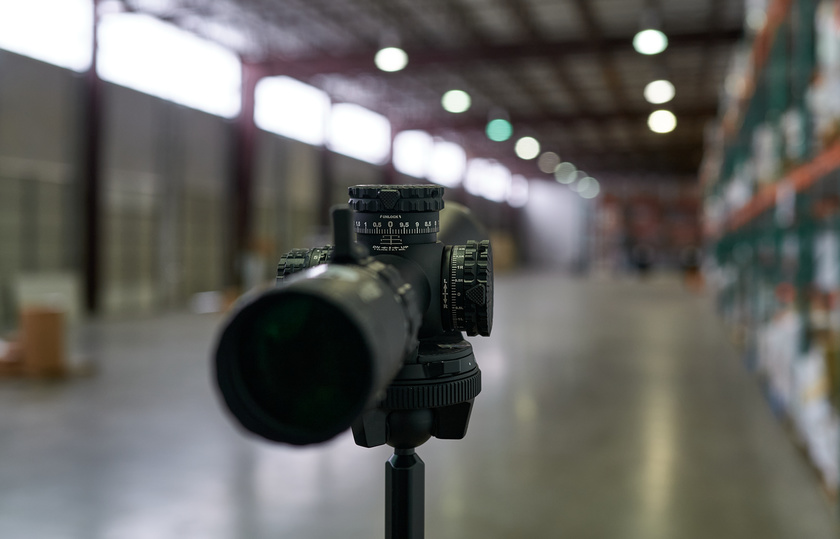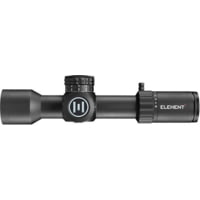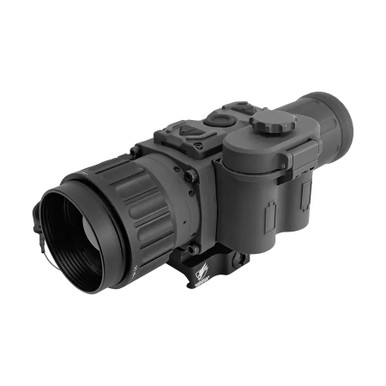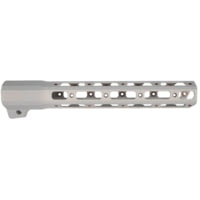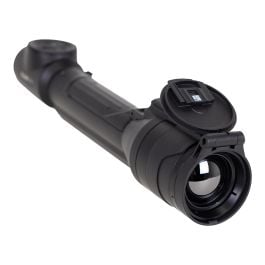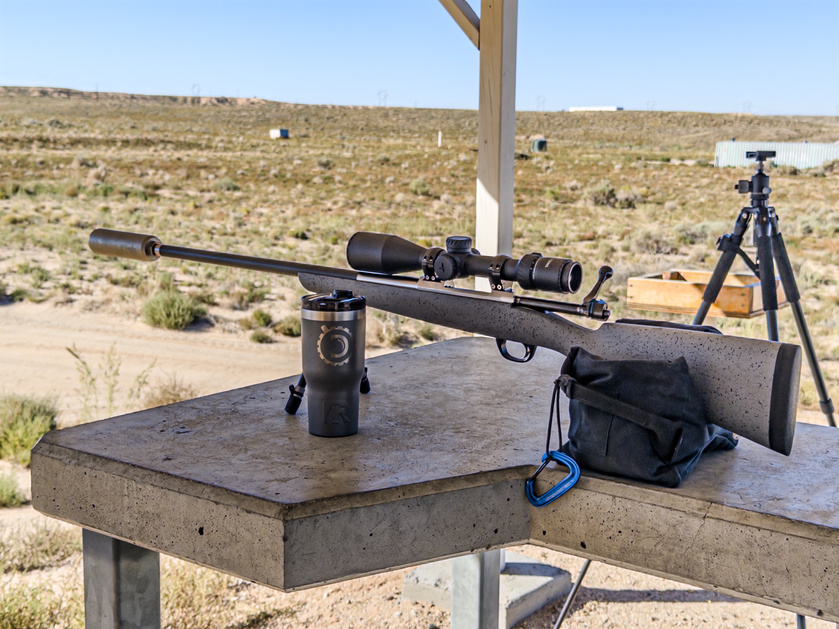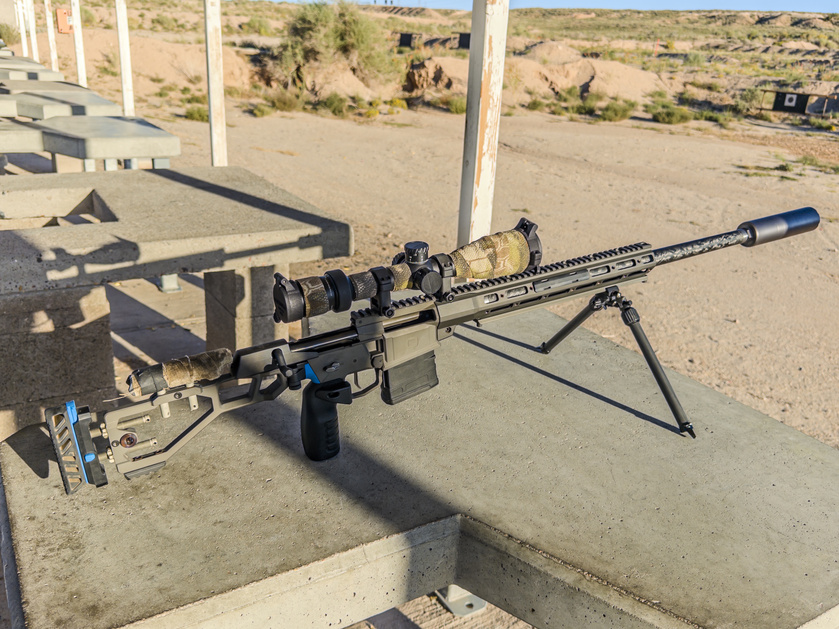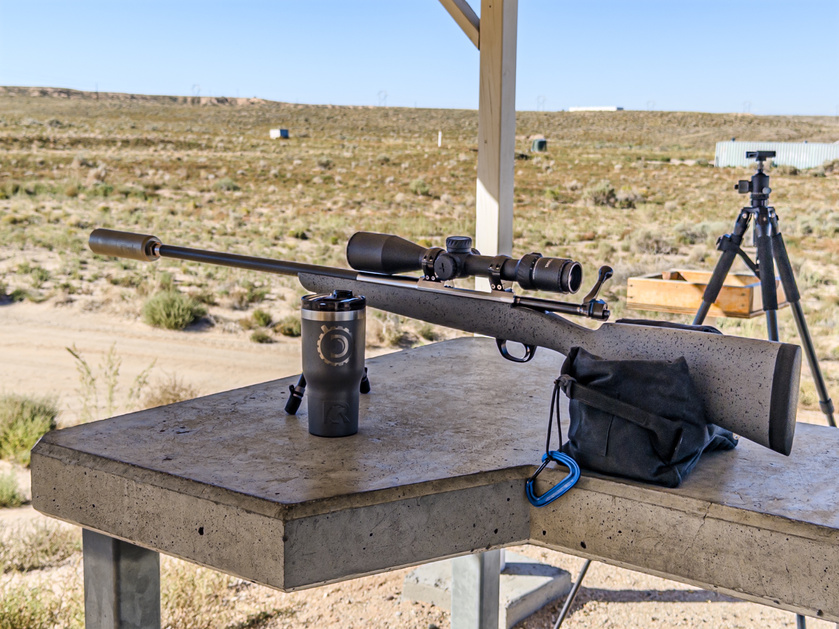Primary Arms visit turned out to be quite surprising. I have been talking to the gentleman who runs PA on and off for a while now, but somehow I still wasn't grasping the entire scale of their operation. Now, to be fair, I am certainly still not aware of everything they do. However, looking back on it, I really shouldn't have been that surprised. They have a seriously substantial warehouse since they stock they stuff they sell and, looking at their website, it should have been apparent that requires space and manpower.
What I didn't know is that they have a pretty solid engineering group in-house and how much effort and resources go into the Primary Arms branded optics. When PA optics line started, what they had were just comparatively standard OEM scopes that stood out because of the ACSS reticles. As I have elaborated previously, some ACSS reticles I like and some I do not. A lot of it is just personal preference, to be honest, and some is just stylistically differences. However, all of the ACSS reticles I have seen to date are intelligently conceived and I can clearly see what the design goals were and how they went about achieving them. That's more than I can say about most reticles out there.
PA optics line still has the various ACSS reticles, but there is a lot more to them now which is how they ended up within my field of view, so to speak.
Many of their products stopped looking like "me too" designs with good reticles. The line of micro-prisms that I have been talking about is unique to them. Other small prismatics out there come from different OEMs.
The new PLxC 1-8x24 LPVO is just exceptional and easily clears the bar to make it onto my list of recommendations (with room to spare, frankly). Optomechanically, it is clearly going after scopes like Razor Gen3 and ATACR. Given the price, if they ever add a diffractive reticle to it, they will absolutely be in the same conversation.
The interesting part is that when I first saw that scope, it absolutely threw me for a loop. At this stage in the game, when I look at a scope, I can usually make a pretty good guess which OEM it is from, especially which Japanese OEM. This scope sorta looked like a LOW design, except I had never seen that exact version (and for a good reason since it turned out to be entirely new and likely proprietary to PA). The turrets, however, did not look like it and did not feel like it. Click feel was different and when I took the removable part off, the insides were kinda sealed. I generally do not take scopes apart beyond what is expected of a consumer (sort of a courtesy to the manufacturers; although there are exceptions to that), so I did not go further.
Now, that I got a chance to spend a little time with the team at PA, it all makes sense. There is a good size engineering group in-house and an increasing number of the PA optics have some elements of their own design, with turrets being at the top of the list. There are other things coming though. For example, they are a bit cagey about what is happening there, but they are building a cleanroom. You do not need a cleanroom like that for QC.
Now, one of the things I look for when I visit companies is the quality of the team. If you have a cohesive team, a couple of smart engineers and company support you can get a lot of stuff done. The gentleman who is in charge of engineering at PA looked strangely familiar. It turned out that we had crossed paths in the past (through my dayjob) a decade or so ago. More importantly, we have some mutual friends who speak highly of his abilities. That's the kind of stuff I pay attention to and that also explains why I am seeing increasingly sophisticated opto-mechanical designs coming out of PA, with more on the way. Also, I got a glimpse into the insides of one of his turrets designs (looking at the CAD screen over his shoulder) and it is a clever system that should be durable.
For another example, PA has a few red dot sights in different price ranges and the new one I got to play with is the SR-10. It is a part of their SLx line, so it is on the budget end of things. We'll see how it does, but offhand, it looks like a pretty straightforward Docter-pattern open emitter red dot sight for use on both pistols and long guns. However, for a couple of hundred bucks, it comes with a picatinny mount and a very slim Glock MOS adapter. I'll confirm, but I am pretty sure it will sit low enough to co-witness with standard Glock sights. Decent collimation quality with a 3MOA dot.
The product line I have been paying most attention to lately was probably GLx. Don't get me wrong, the new PLxC seems good enough to satisfy even my optics snobbery and the SLx are very good budget options (admittedly, I am mostly familiar with SLx red dots and micro-prisms). GLx, however, might be the best bang for the buck of the bunch, starting with the 2x prismatic I looked at a little while back. Then, I looked at the 2.5-10x44 that is very feature rich and just excellent mechanically (it also has their own turret design and, now that I met the engineering team, I understand why it is excellent). Optically, it is better than adequate, but not exceptional. It is good enough for me to recommend it overall, though. I knew they had new GLx scopes coming, and that is what I really wanted to see while I was there. They were refreshingly open about their upcoming products. A couple of them they asked me to not talk about yet, but there are several that are coming soon enough to discuss. There were four new variable scopes I saw. One was the 1-10x24 FFP LPVO made in Japan by JOL. Three were made in the Philippines, all with FFP reticles: 1-6x24, 3-18x44 and 4.5-27x56. I got a chance to see near-production quality prototypes of all four and I was, honestly, pretty impressed.
General disclaimer: there isn't all that much I can immediately say from looking at scope indoors, but there are a few things to look for and I did not see any glaring problems. Mechanically, everything had a good feel and all had PA's own turrets that I noted earlier. I am not entirely sure what the final pricing will be and I suspect they are still finalizing that. Once I know the specifics, I'll let you know.
The 1-10x24 is a bit on the heavy side of the LPVO world, but I have seen this optical system before and it really is quite good with a well designed eyepiece, so it is easy to get behind. It should play nicely against other LPVOs out there that are used in a DMR-ish role, i.e. on accurate AR carbines that have to work from up-close and personal out to a few hundred yards.
The 1-6x24 was completely new to me. I had no idea it was in the works. Of the two LPVOs, this one is probably the one I am more curious about since I have not seen that optical system before. It did look quite respectable. Reticle illumination seemed adequately bright, but I was indoors the whole time. That's something to check. The eyepiece, however, is done very well, so I expect it to be quite easy to get behind. We had a long warehouse to use, so I set the scopes up on a tripod and spent some time peering through them on different magnifications. The 1-6x24 had good detail and good flare control best I could tell.
The scope I was arguably most impressed with was the 3-18x44. It has the same excellent zero-lock and zero-stop turrets I liked on the 2.5-10x44, but a better magnification range for crossover use and likely better image quality. With this one, we are getting into magnification ranges where there isn't a ton I can really say indoors, but it looked promising. This scope should be a contender as a crossover scope for anything from accurate ARs to lightweight precision rifles. I'll post full specs once available.
Same goes for the 4.5-27x56 model. It appeared to have more or less the same mechanical features, so I have reasonable confidence it will work well. I did not see anything obviously wrong optically, so that is encouraging too.
All of these GLx scopes showed some commonality of mechanical design and eyepiece design, which is a good thing. GLx scopes seem to sit in that rough sweetspot where you can get a lot for your money, but these are not cheap scopes. That's roughly the same market where Vortex' PST Gen2 plays. Various Athlon Ares scopes are in there as well as several others. This is where you can find decent quality Japanese scopes and higher end Phillipine-made and Chinese designs. This is really where the battle of the OEMs is happening right now, I think.
Lastly, I wanted to look at how they do QC and it turns out that every PA branded optics that comes in, no matter how expensive, is looked at. Every single one is taken out of the box and checked. That, I did not expect. To the best of my knowledge, for the inexpensive chinese optics, noone else checks every single one. With higher end products that is pretty common, but checking EVERYTHING is pretty unusual.
Overall, it was an interesting visit. PA is located in the part of the country I visit with reasonable regularity, so I'll make it a point to check on them every once in a while. I kinda want to know what they plan to do with that cleanroom.

